As a historic masonry restoration specialist, our work often takes us to somewhat unique elements of historic masonry. Recently, we examined an area of a wall with an applied thick parge coat of cement applied at the wall base. It looked a lot like a thickened base plinth, but it was actually a surface application.
This thickened cementitious application at the base of the wall was applied, originally, many decades ago, to mitigate and deal with challenges associated with moisture infiltration and its adverse effects on brick and mortar. This is one type of splashback protection, to mitigate damage caused by water splashing back from the ground surface.
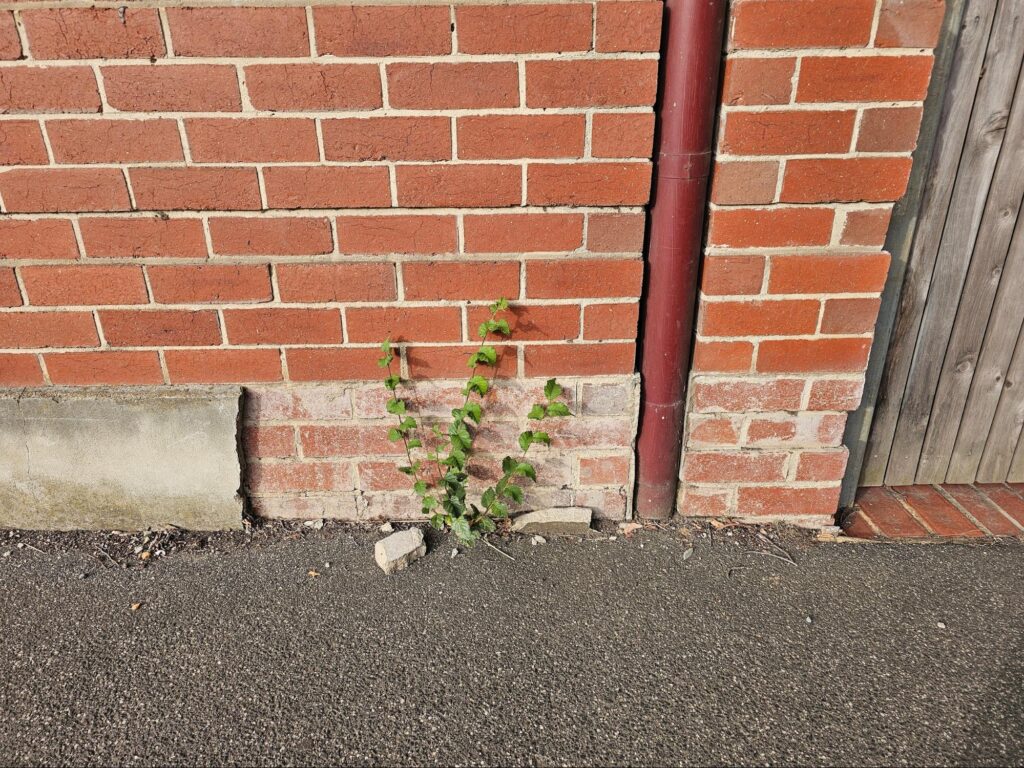
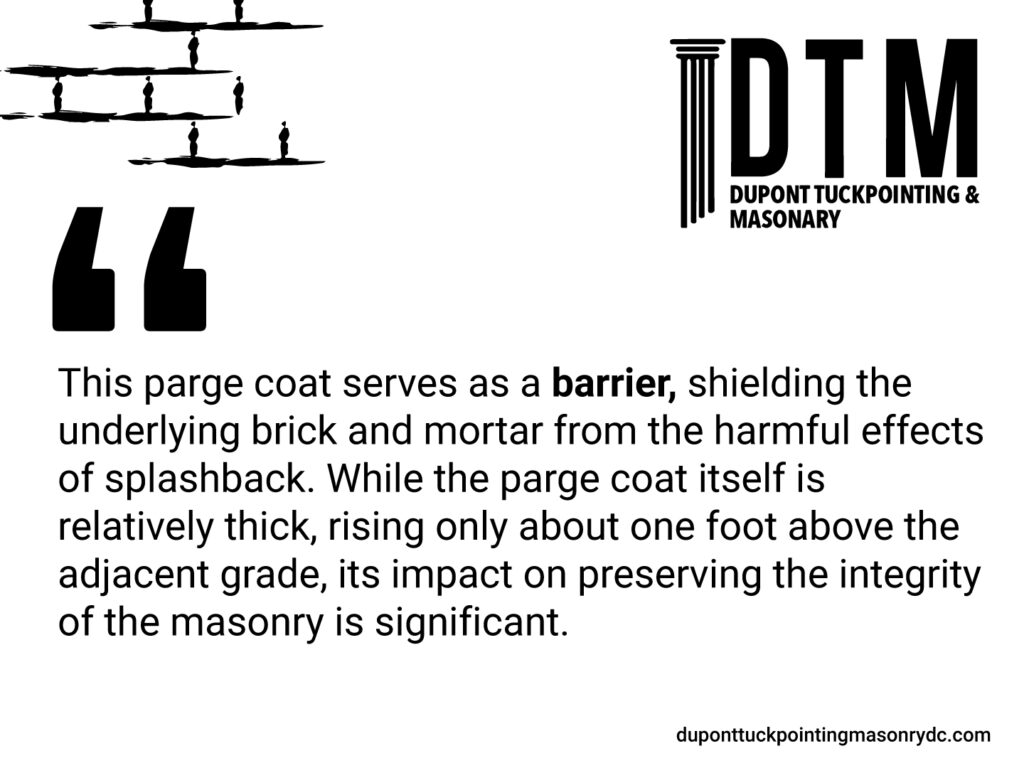
This protective measure, the application of a cementitious parge coat, extending approximately one inch away from the surface of the brick wall at its base can help with splash back. This parge coat serves as a barrier, shielding the underlying brick and mortar from the harmful effects of splashback. While the parge coat itself is relatively thick, rising only about one foot above the adjacent grade, its impact on preserving the integrity of the masonry is significant.
The primary purpose of this application is to prevent moisture, containing various contaminants from the ground surface, from directly contacting the brick and mortar. Over time, continuous exposure to splashback can lead to accelerated deterioration of the masonry materials, compromising both structural stability and aesthetic appeal. By creating a protective barrier, the parge coat effectively mitigates this risk, prolonging the lifespan of the brick wall and reducing the need for extensive repairs or restoration work in the future. Mortar is a mixture of cement, sand, and water, and serves as the binding agent between bricks, providing strength and cohesion to the masonry assembly. Most cases, with historic brick construction, the motor is created by using lime as a binder instead of Portland Cement. Once in a while on the internet and in our local area people confuse the nomenclature and details of the constituent materials but lime is a type of binder, similar to cement. Unlike Portland Cement, lime has been used continuously since prehistoric times.
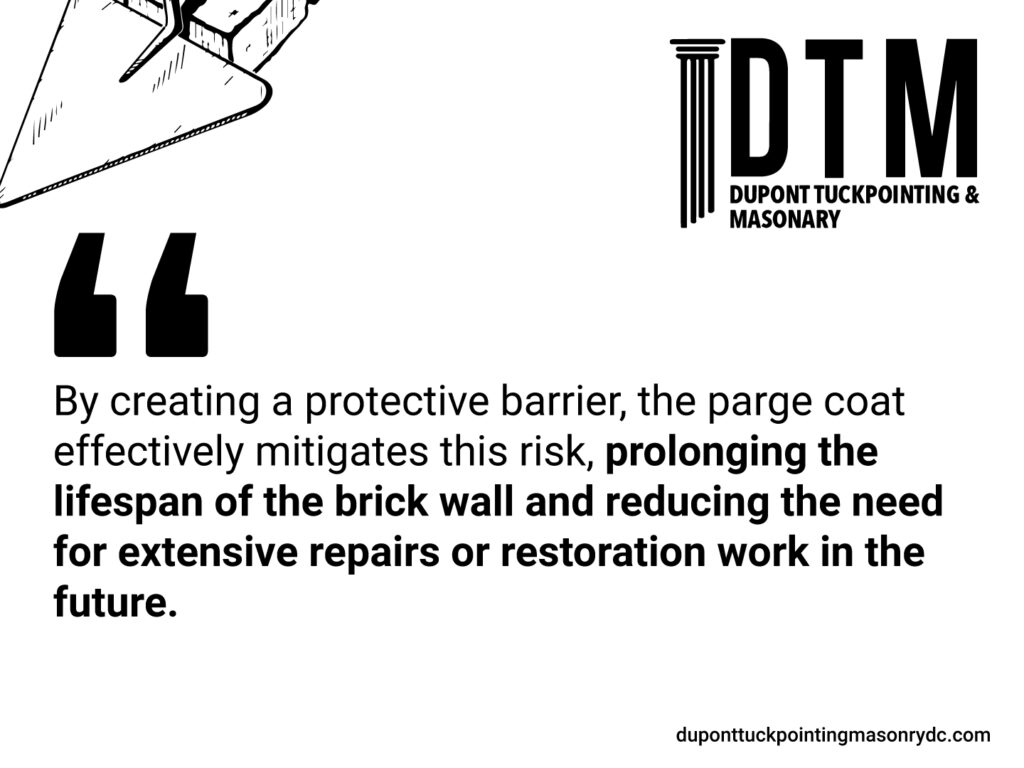
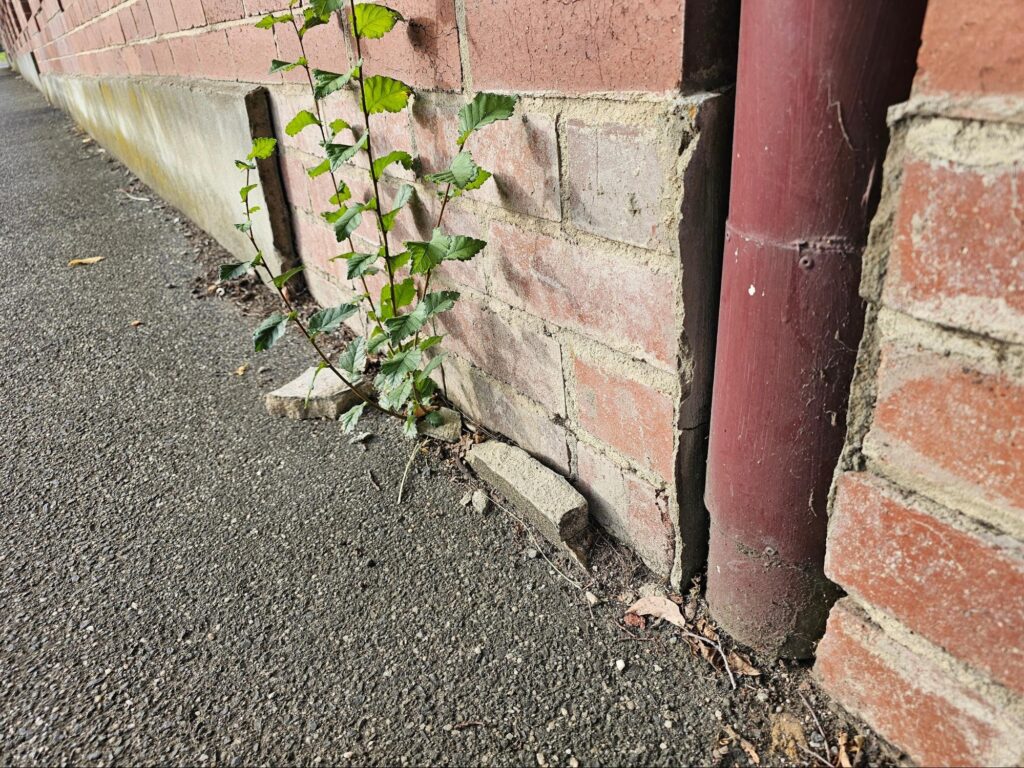
Moreover, splashback protection not only safeguards the structural integrity of historic masonry but also contributes to the overall preservation of the building’s architectural elements. By addressing moisture-related issues proactively, it’s possible to extend the lifespan of the wall assembly.
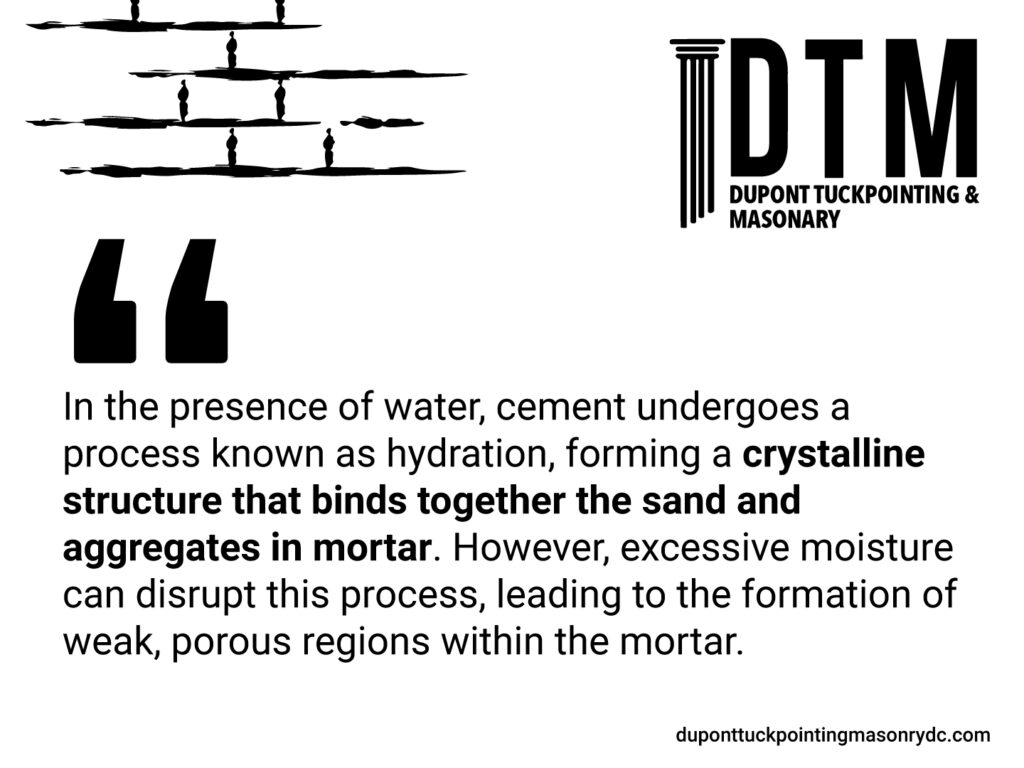
Splashback protection, such as the application of a cementitious parge coat at the base of brick walls, plays a crucial role in preserving the integrity of historic masonry. This preventive measure was initially applied as an attempt to mitigate the adverse effects of moisture infiltration, and safeguard the masonry assembly and its structural stability.
When subjected to excessive moisture, the porous nature of brick allows water to penetrate its surface, leading to a series of chemical reactions within the material. Over time, water infiltrating the brick can dissolve soluble salts present in the clay minerals, causing efflorescence—a white, powdery deposit visible on the surface of the brick. Additionally, freeze-thaw cycles can exacerbate the deterioration process, as water trapped within the brick expands upon freezing, leading to internal pressure and eventual cracking or spalling of the brick.
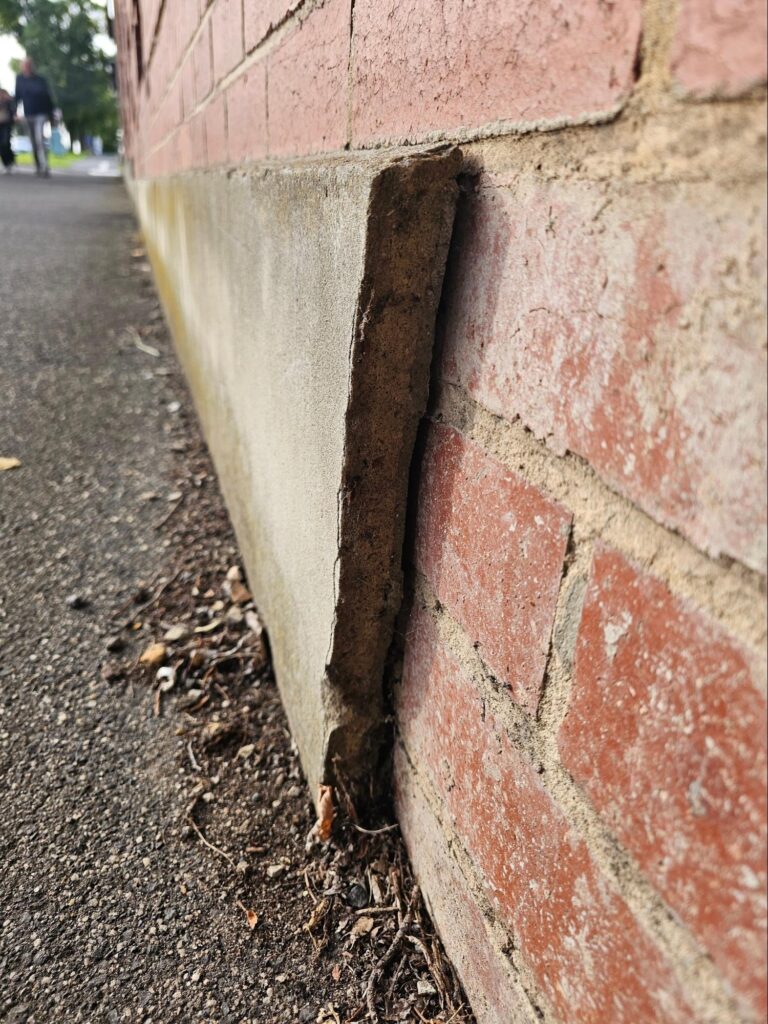
Similarly, mortar is susceptible to damage from moisture infiltration. Water penetrating the mortar joints can weaken the bond between bricks, compromising the structural integrity of the masonry assembly. Additionally, prolonged exposure to moisture can lead to the leaching of lime from the mortar, resulting in a loss of cohesion and strength.
Chemically, moisture can initiate the breakdown of cementitious materials present in both brick and mortar. In the presence of water, cement undergoes a process known as hydration, forming a crystalline structure that binds together the sand and aggregates in mortar. However, excessive moisture can disrupt this process, leading to the formation of weak, porous regions within the mortar. Furthermore, prolonged exposure to moisture can promote the growth of mold, algae, and other microorganisms, which further accelerate the deterioration of both brick and mortar materials.
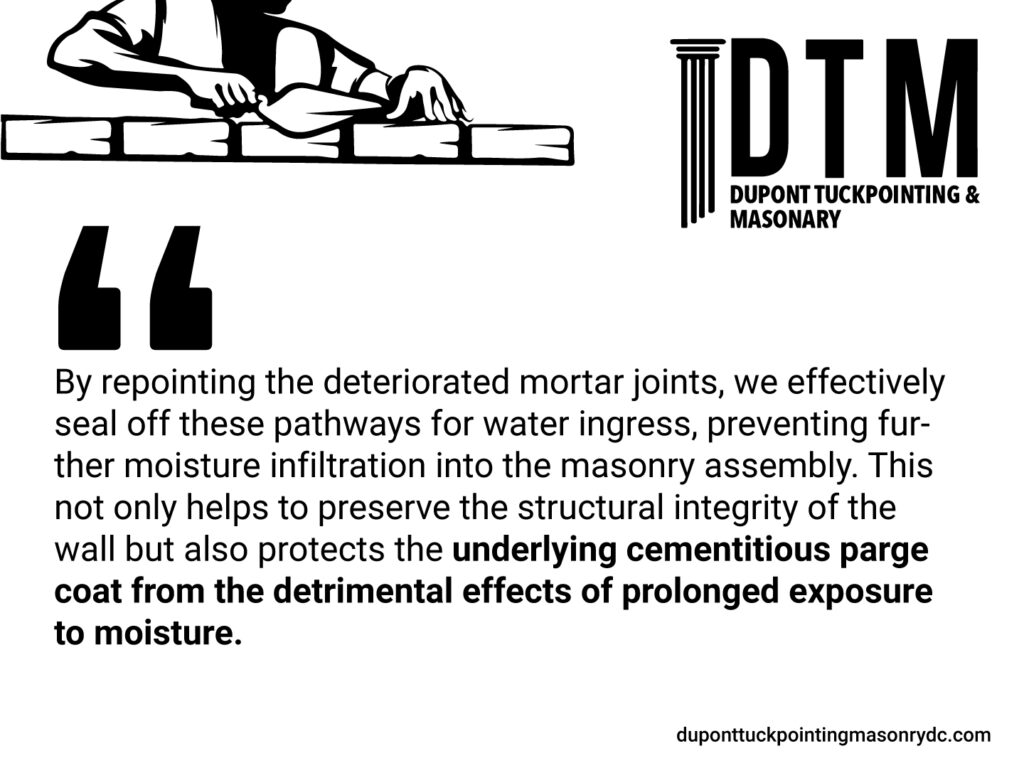
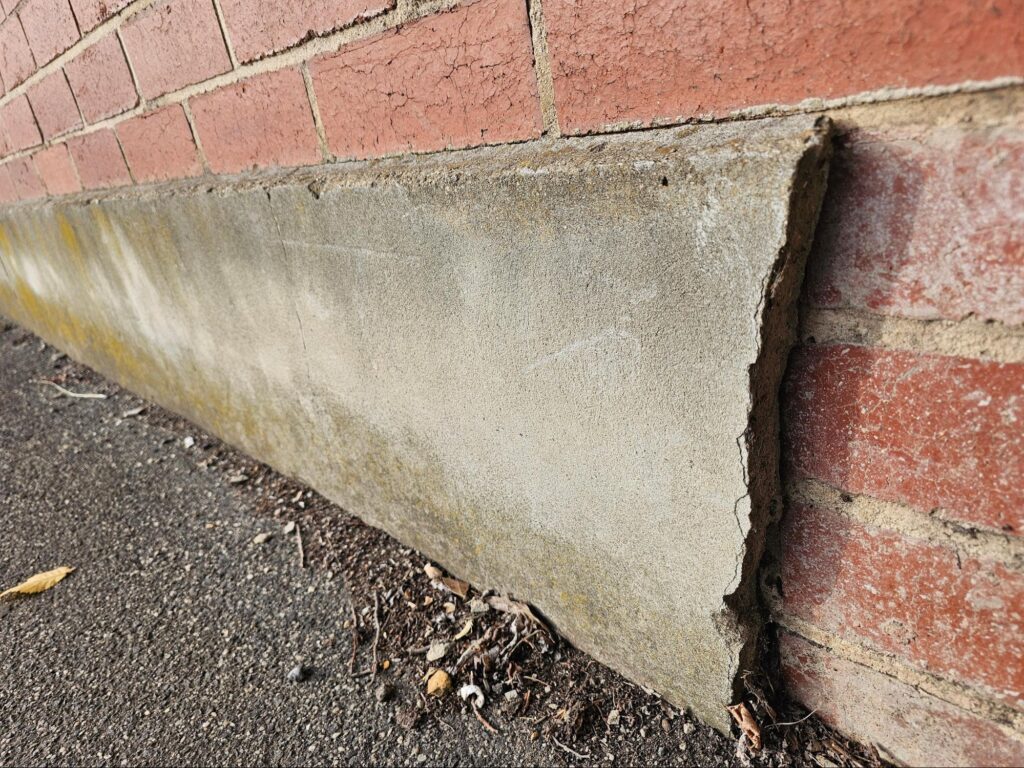
Repointing the mortar joints above the area of delamination of the parge coat serves as a crucial preventive measure to preserve the integrity of the cementitious coating below. When mortar joints deteriorate due to age, weathering, or other factors, they become porous and susceptible to water infiltration. As water penetrates these compromised joints, it permeates deeper into the interstitial spaces within the brick and mortar assembly, exacerbating the deterioration process.
By repointing the deteriorated mortar joints, we effectively seal off these pathways for water ingress, preventing further moisture infiltration into the masonry assembly. This not only helps to preserve the structural integrity of the wall but also protects the underlying cementitious parge coat from the detrimental effects of prolonged exposure to moisture.
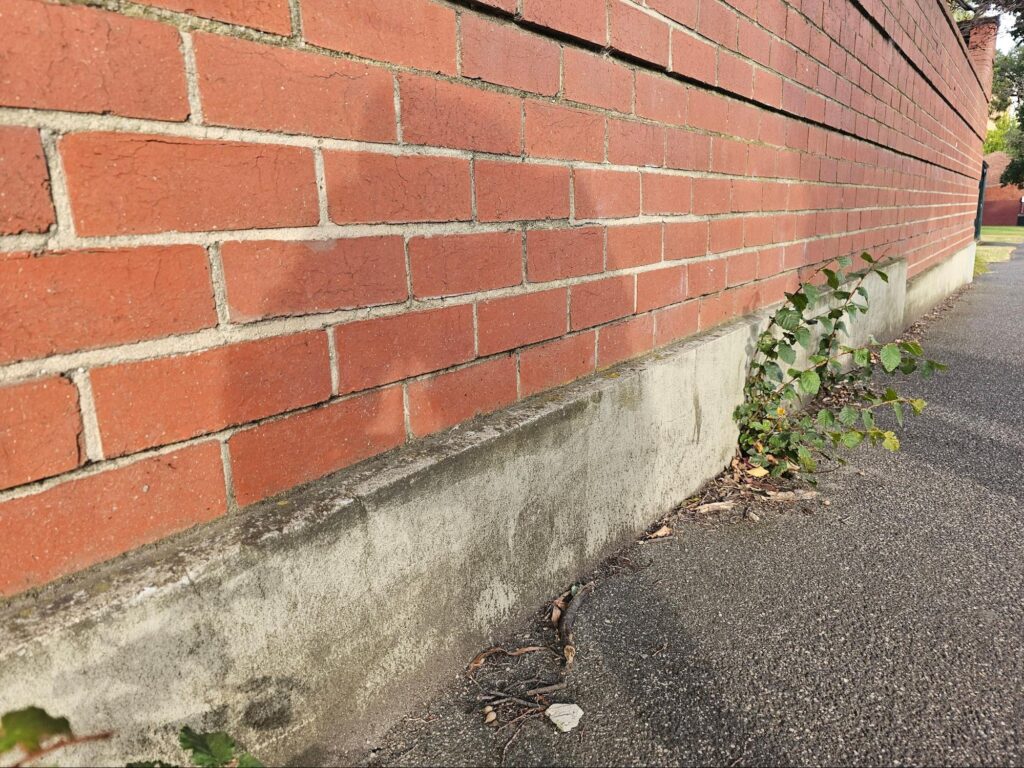
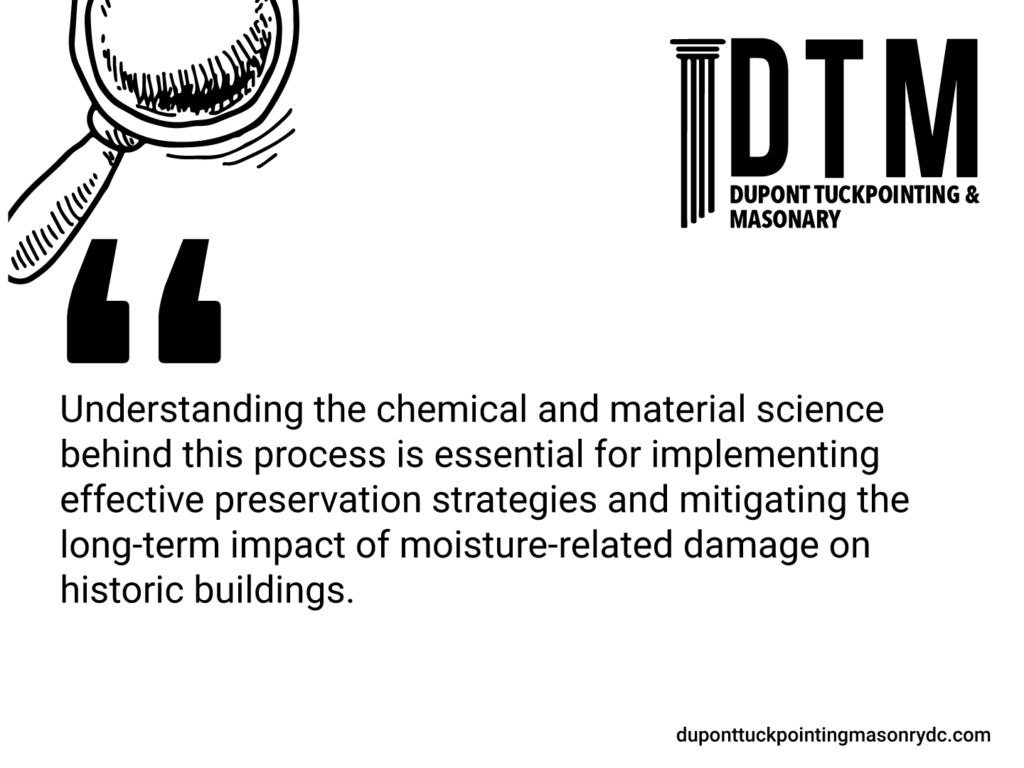
Moreover, repointing the mortar joints above the delaminated area of the parge coat creates a cohesive and watertight barrier, ensuring that water is directed away from the vulnerable base of the wall. As water is diverted from entering the masonry assembly, the risk of further delamination and deterioration of the cementitious coating is significantly reduced.
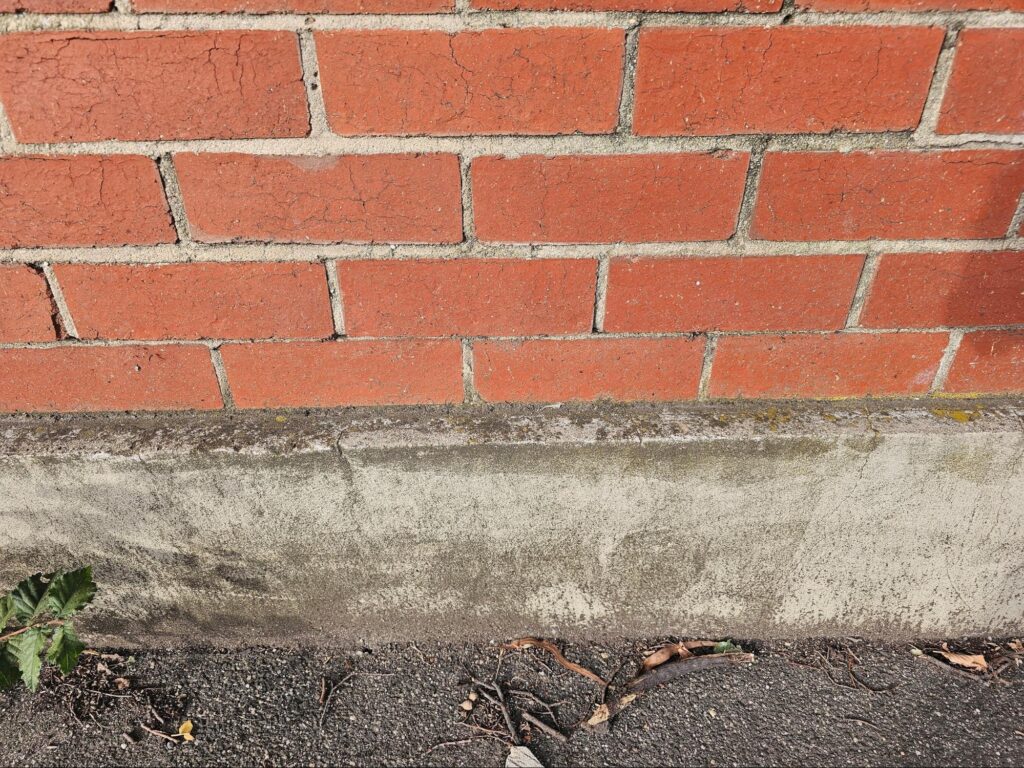
In addition to repointing, it is essential to address any underlying issues contributing to mortar joint deterioration, such as poor drainage, inadequate flashing, or improper wall ventilation. By identifying and rectifying these underlying causes, we can prevent future deterioration and prolong the lifespan of the cementitious parge coat and the entire masonry assembly.
Furthermore, regular maintenance and inspection of the masonry wall are crucial for early detection of any signs of deterioration or damage. By promptly addressing any issues as they arise, we can prevent minor problems from escalating into more significant structural issues that require extensive repairs or restoration.

Overall, repointing the mortar joints above the delaminated area of the parge coat is a proactive and effective strategy for preserving the integrity of historic masonry structures. By addressing deteriorated mortar joints and preventing moisture infiltration, we can prolong the lifespan of the cementitious coating which leads to the long-term stability and beauty of the masonry wall because the deterioration of brick and mortar in historic masonry structures is primarily attributed to the deleterious effects of moisture infiltration. Understanding the chemical and material science behind this process is essential for implementing effective preservation strategies and mitigating the long-term impact of moisture-related damage on historic buildings. As stewards of our built heritage, we remain committed to employing innovative solutions that address these challenges while preserving the building facades and historic masonry buildings assemblies here in historic Washington, DC.
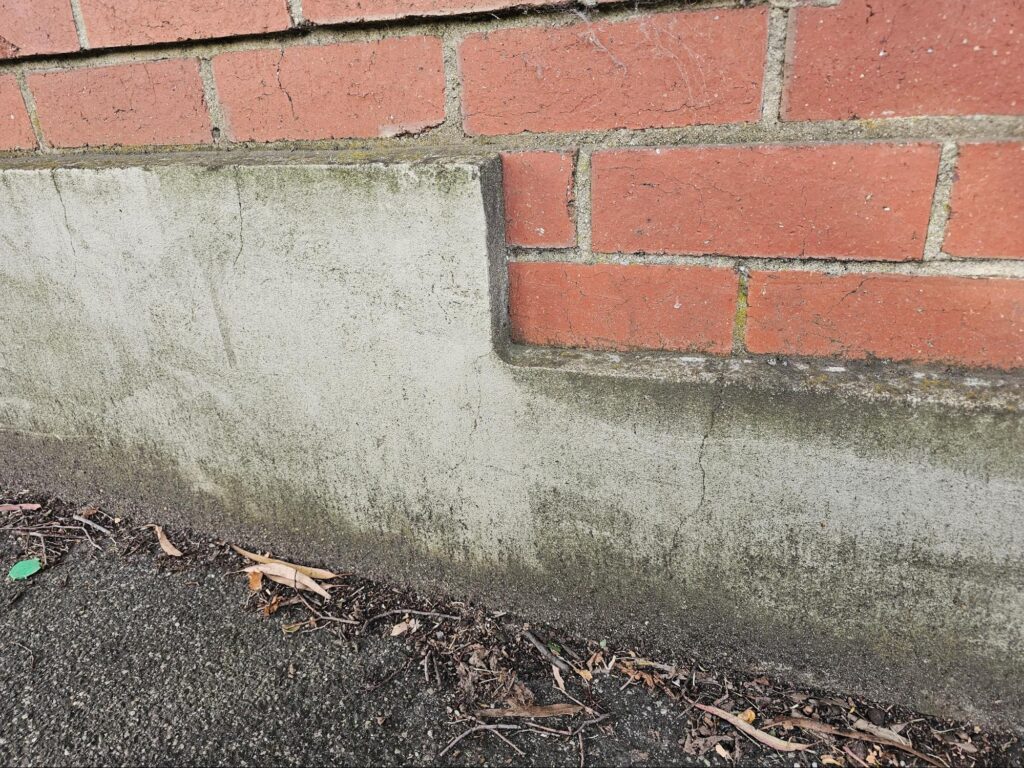
Follow us as we look at the science behind aging masonry and discover solutions to slow deterioration and maintain the structural integrity of our cherished historic buildings here in Washington, DC.
Contact us today to learn more.




